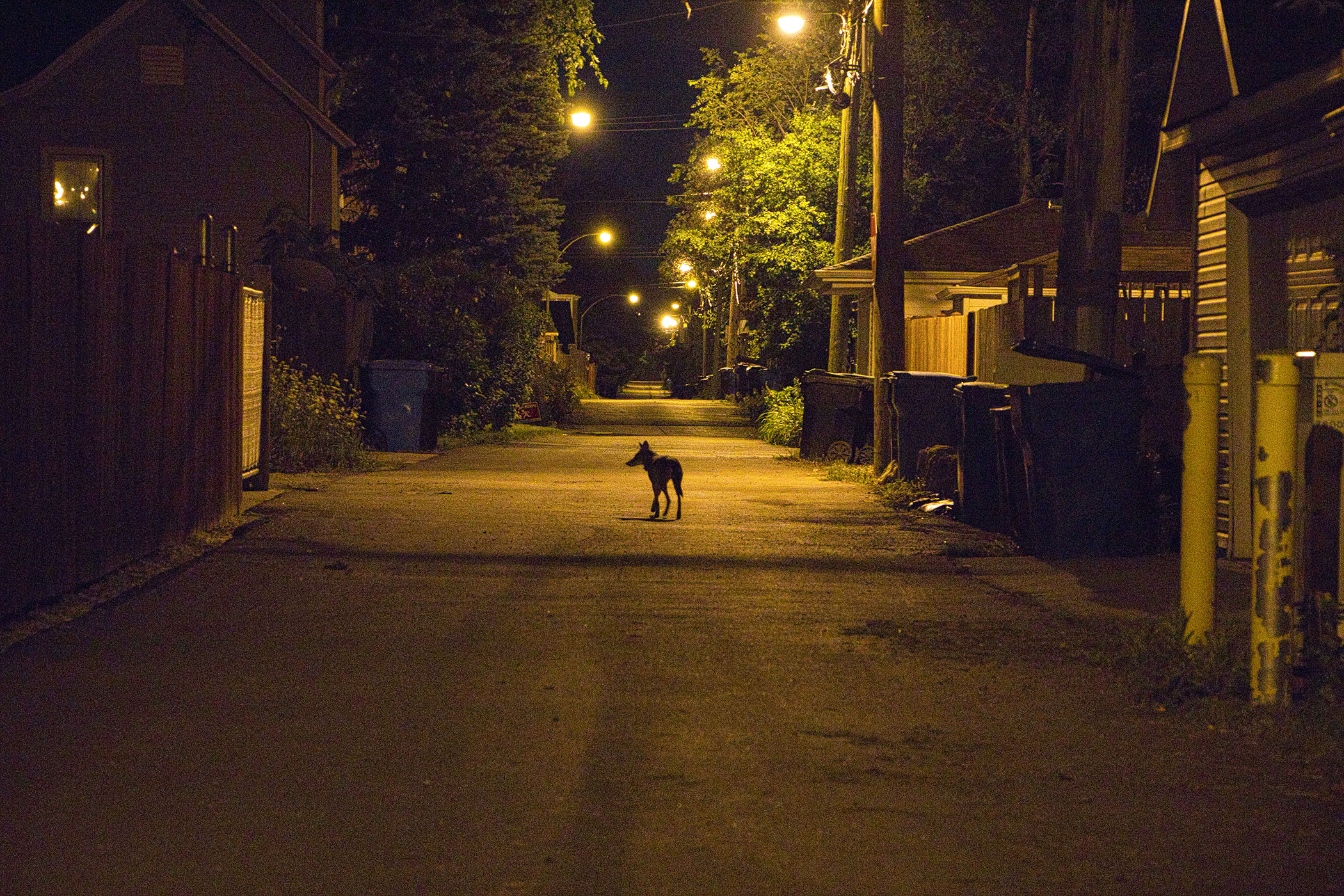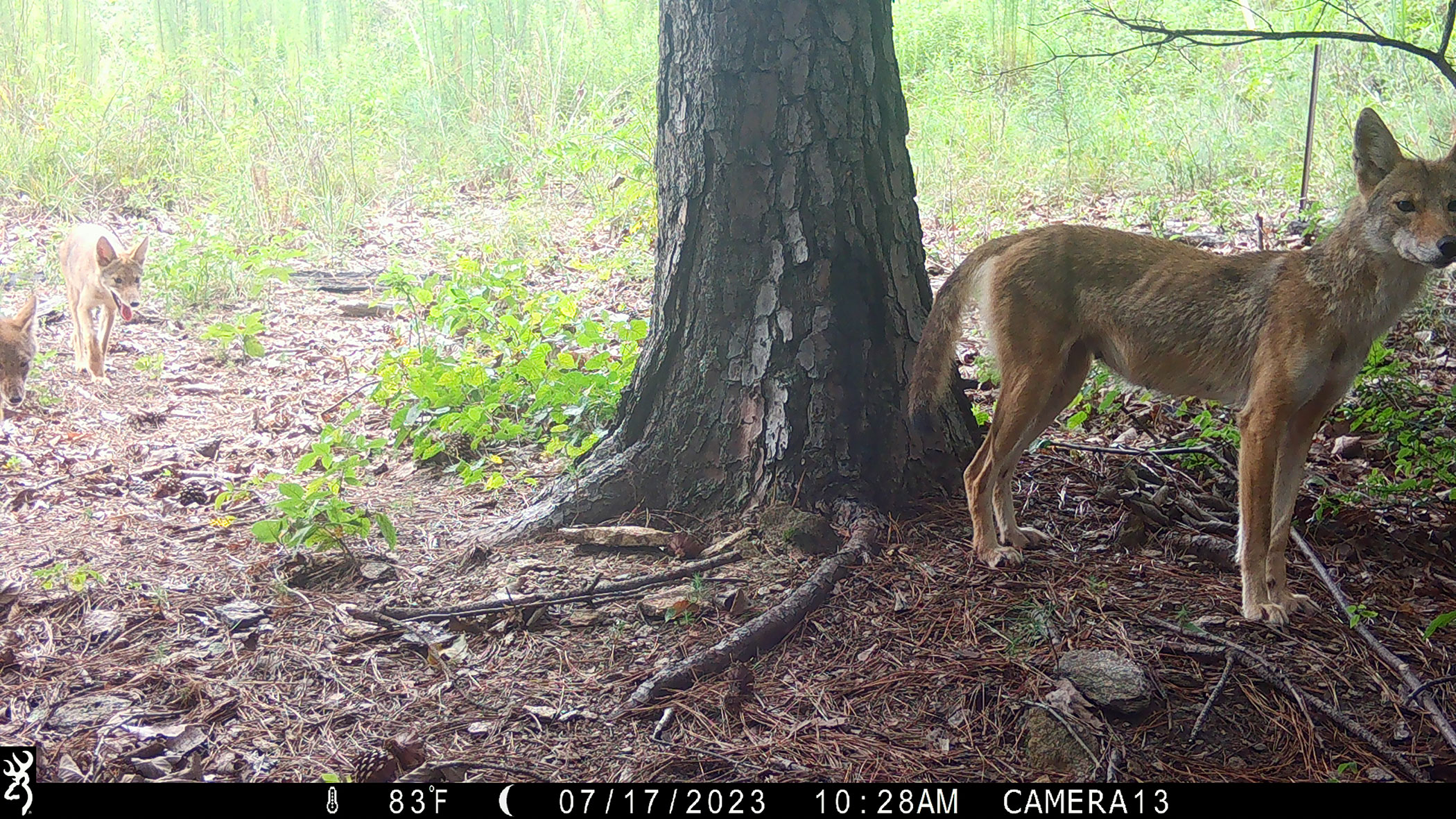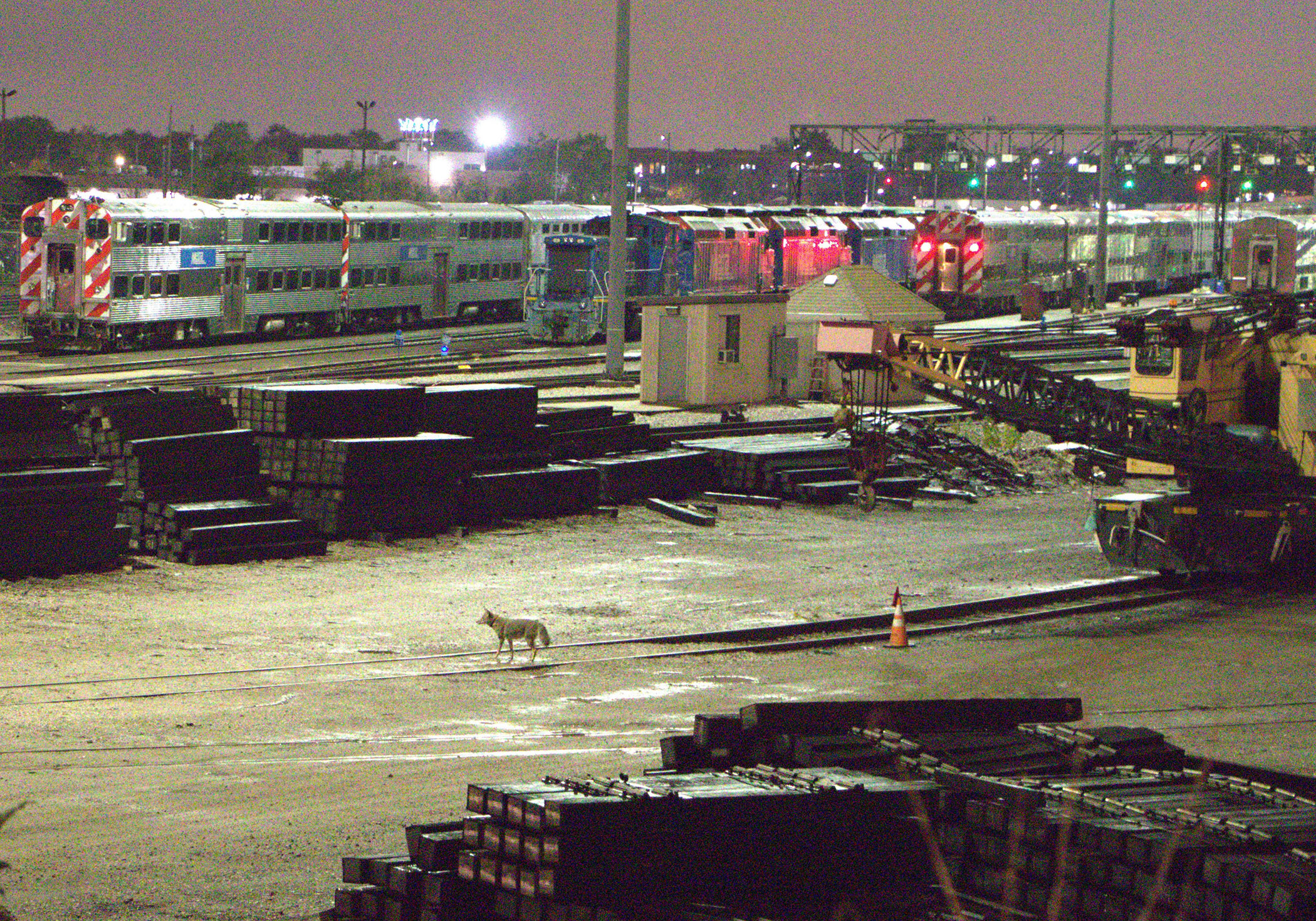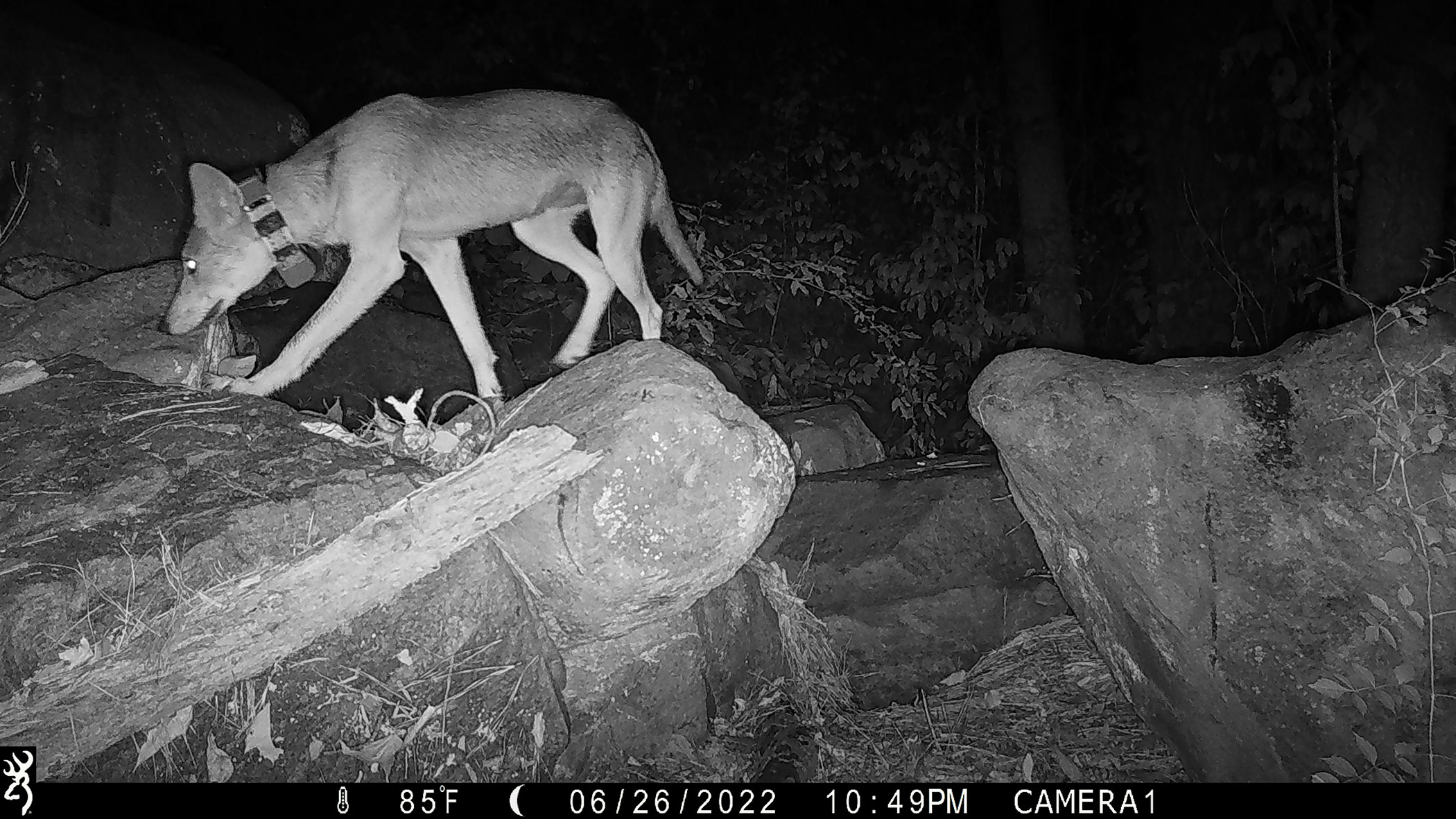Georgia’s capital is home to more than 6 million people, a bustling film and music scene, and one of the most adaptable species in the U.S.: the coyote.
And now, thanks to new video footage from the University of Georgia’s Warnell School of Forestry and Natural Resources, we’re getting a better idea of how and where coyotes spend their time in Atlanta.
In partnership with Wildlife Atlanta and the Georgia Department of Natural Resources, UGA is releasing GPS collar videos from coyotes in the Atlanta area as part of their urban mammal ecology project. One of the goals of this study is to provide insight into coyotes’ daily activities in the hope of minimizing negative human interactions with coyotes.

The videos show that coyotes largely avoid both interactions with people and areas where people are likely to be during the day. Some of the footage shows a coyote resting in a wooded area off the interstate, a coyote grooming a pup near its den in the forest and a group of coyotes drinking water from a creek.
But the videos also confirm that coyotes are opportunistic creatures. Once night falls, collar footage shows a coyote snagging a fast-food bag from a parking lot, and another clip sees a mated pair hanging out near a radio station parking lot.
“Coyotes have expanded their range east, demonstrating their incredible resilience and ability to adapt. Now, they’re even found in some of the densest urban centers in the country,” said Michel Kohl, the primary investigator of the project and an associate professor in UGA’s Warnell School. “A lot of what we see in Atlanta can be applied to other large metropolitan areas as well.”
Kohl hopes these videos can answer some of the most pressing questions people have about these canines and reassure them that coyotes pose little risk to humans.

Are there coyotes in Atlanta?
Yes. In fact, coyotes are found in just about every state in the U.S., including urban areas.
Although coyotes can now be found in all 159 counties in Georgia, they first arrived sometime in the 1970s. And it took some time for them to make their way into the metro-Atlanta area, Kohl said.
Coyotes are traditionally most active at dawn and dusk. But in their effort to avoid interactions with humans (and vehicles), urban coyotes have become more active at night.
If you do see one during the day, though, there’s no need for alarm.
“That’s not necessarily an abnormal thing,” Kohl said. “People might have moved into the park where it was and scared it out of its location. It doesn’t mean that the coyote has rabies.”
While coyotes can become infected with rabies, it’s not common.
“The risk of contracting rabies from a coyote is very low, but the fear is very high because people are not necessarily exposed to large wild animals like coyotes,” said Summer Fink, a doctoral student in the Warnell School involved in the research.

Are coyotes going to injure my child?
As the videos show, coyotes aren’t keen on interacting with people.
Coyote attacks on humans are extremely rare. When they do occur, it often stems from factors such as people feeding coyotes.
If you see a coyote that’s too close for comfort, make loud noises to chase it off. You can also spray it with a hose or turn on your sprinklers to encourage it to leave the area.

Are coyotes going to injure my pets?
Probably not, but there are some things you can do to protect your furry friends.
Don’t feed or approach a coyote, and secure your garbage, pet food and birdseed so coyotes (and other wildlife) can’t access it. Similarly, close off crawl spaces so coyotes don’t take up residence under your house.
It’s also important to keep small pets inside or on a leash when on bathroom breaks.
Data shows that coyote diets largely consist of small mammals and fruit—and the occasional discarded hamburger.
But the collar videos did show several instances of coyotes feeding on feral cats. The videos don’t show whether the cats were scavenged roadkill or killed by the coyotes.
The videos did not show any interactions between coyotes and dogs.
“Unlike dogs, people like to let cats roam freely, but the biggest thing you can do to keep them safe is to keep your cats indoors,” said Carson Daniel, an associate wildlife biologist and the urban wildlife extension assistant leading the camera collar research.

What diseases can coyotes carry?
Most of the diseases you vaccinate your dog for, coyotes can also contract. That includes rabies, distemper, parvo and heartworms.
The good news is keeping your dogs and cats updated on these vaccines and preventive medications minimizes their risk of disease.
Rabies poses the biggest risk to people, but it is largely transmitted through bites. If you take the steps above to minimize interactions with coyotes, the risk of being bitten by one is extremely low.
For more information on living with coyotes and to see clips from the GPS collar videos, visit the Wildlife Atlanta website.


